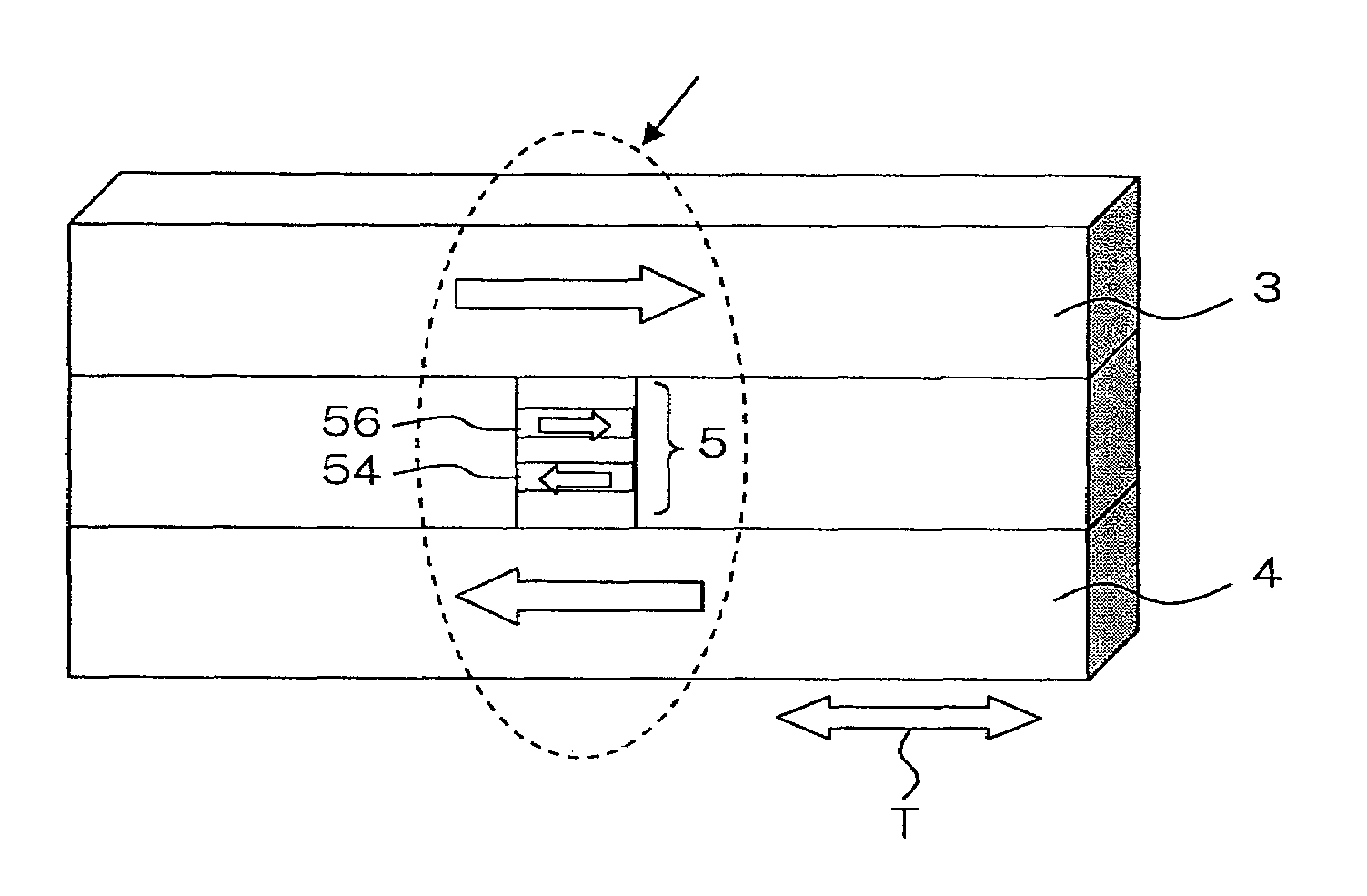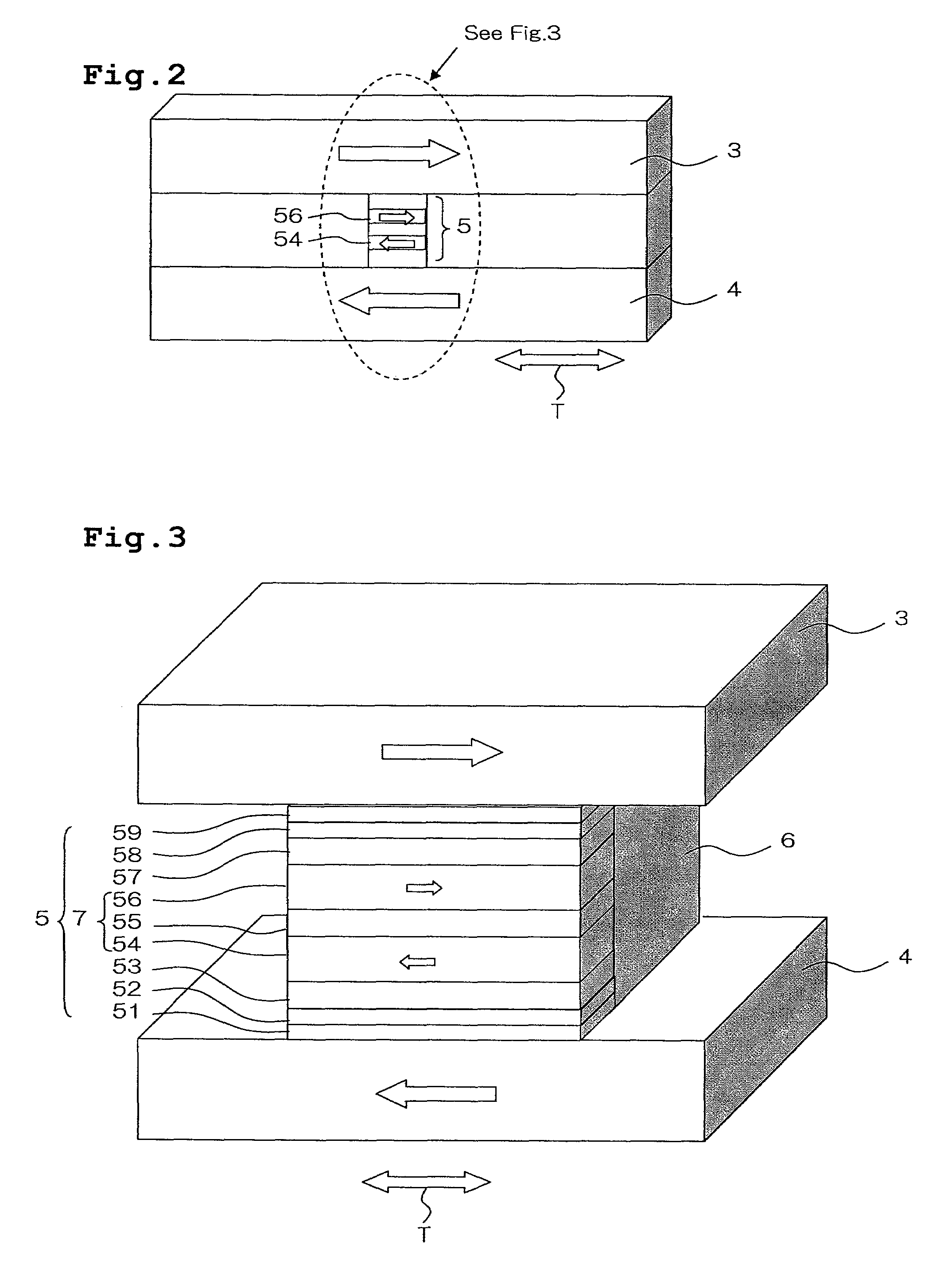Method for inspecting magnetic characteristics of a plurality of thin magnetic heads by means of local application of magnetic field
a thin-film magnetic head and local application technology, applied in the direction of magnetic measurement, instruments, measurement devices, etc., can solve the problems of limiting the frequency of an alternating magnetic field, affecting the efficiency of inspection, and difficult to achieve frequencies higher than 1 megahertz, etc., to achieve the effect of simulation of a high-frequency alternating magnetic field
- Summary
- Abstract
- Description
- Claims
- Application Information
AI Technical Summary
Benefits of technology
Problems solved by technology
Method used
Image
Examples
Embodiment Construction
[0028]First, a description will be made of a general outline of a thin film magnetic head to which the present invention is applied. The present invention is applicable to a thin film magnetic head that is provided with any element that utilizes the magnetoresistance effect. Examples of these elements include a CIP (Current in Plane)-GMR element in which a sense current flows in parallel with the film plane thereof, a CPP (Current Perpendicular to the Plane)-GMR element and a TMR (Tunnel Magneto-resistance) element in both of which a sense current flows perpendicularly to the film plane thereof. An example of a thin film magnetic head that is particularly suitable for the present invention will be described. In the magnetoresistance effect element of a thin film magnetic head, the function of a magnetic field sensor is achieved by a pair of magnetic layers, which are stacked in the vertical direction and whose magnetization directions change according to an external magnetic field, ...
PUM
 Login to View More
Login to View More Abstract
Description
Claims
Application Information
 Login to View More
Login to View More - R&D
- Intellectual Property
- Life Sciences
- Materials
- Tech Scout
- Unparalleled Data Quality
- Higher Quality Content
- 60% Fewer Hallucinations
Browse by: Latest US Patents, China's latest patents, Technical Efficacy Thesaurus, Application Domain, Technology Topic, Popular Technical Reports.
© 2025 PatSnap. All rights reserved.Legal|Privacy policy|Modern Slavery Act Transparency Statement|Sitemap|About US| Contact US: help@patsnap.com



